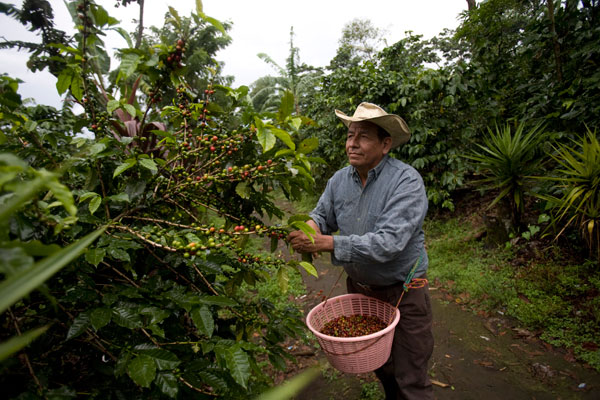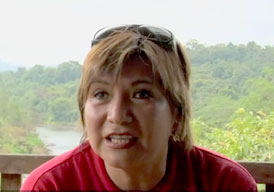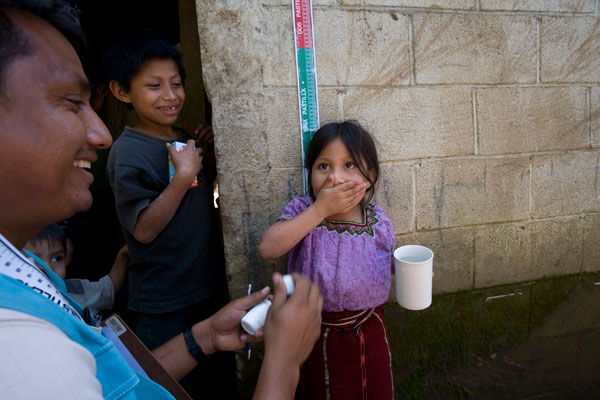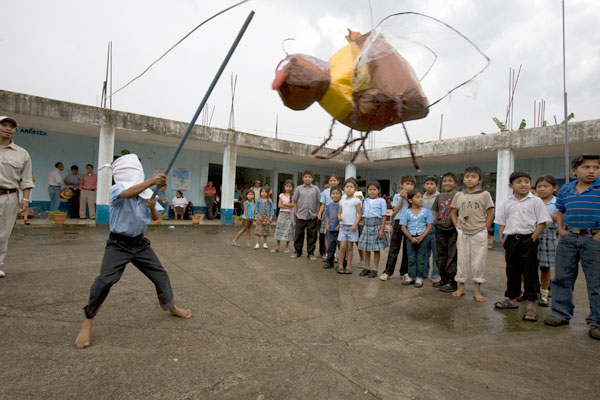Standing in the courtyard of his school in El Xab, Guatemala, his eyes blindfolded, a boy swings a large pole toward a fly-shaped piñata. Schoolmates cheer for the boy, who looks about 9 years old. His friends hope that one well-placed strike will smash the fly, releasing oodles of candy. The adults in charge hope the children leave with something more than a handful of treats.
The goal of the school activities that afternoon was to educate the students about the parasitic disease river blindness, known scientifically as onchocerciasis. When left untreated, the infection can cause itching, skin nodules, diminished vision, and ultimately blindness. The students and their parents see little physical evidence of the disease in their community today, due in large part to the success of a 14-year operation by the Onchocerciasis Elimination Program for the Americas, sponsored by The Carter Center in partnership with the Guatemala Ministry of Health.
For all those years, mass treatment has been provided in the areas afflicted by river blindness with a twice-annual dose of the medicine Mectizan®, donated by Merck & Co., Inc. As a result, the infection is nearly gone, but the threat of its return remains, and so ongoing treatment and health education have become more important than ever.
"My eyes used to tear, and I was covered with lesions on my skin," said Cirilo Aldrin, a 67-year-old farmer and former City Hall employee from Estrellita, Guatemala. "Now we are free of the disease," he said.

Workers on coffee plantations and farms are especially vulnerable to river blindness because such agriculture is typically located near the fast-flowing streams where the transmitting flies breed.
The piñatas in the school courtyard were shaped like flies to remind students that river blindness is transmitted by the bite of tiny flies that breed in the nearby fast-flowing streams. Farmers and coffee plantation workers may be bitten thousands of times each year, and it is the culmination of thousands of bites over time that leads to the disease.
When The Carter Center began its formal program to eliminate river blindness from Latin America in 1996, the disease could be found in 13 areas in six countries - Mexico, Guatemala, Venezuela, Colombia, Ecuador, and Brazil. Today, the Center and its ministry of health partners are fighting the disease in the remaining five areas of four countries.
"We cannot become complacent," said Dr. Frank O. Richards Jr., director of the Carter Center's River Blindness Program. "If you stop elimination activities too soon before the parasite is gone, the infection could come back," he said.
To stop the disease cycle, at least 85 percent of eligible people in an endemic area must take Mectizan each year until the parasite disappears from the local environment. Because there has been no new eye disease caused by river blindness in most areas in Latin America, the challenge is convincing people that the disease may still be present in their communities.
"The most important thing to do is health education - both for health workers and the communities," said Alba Morales Castro, health education adviser for the Onchocerciasis Program for the Americas, headquartered in Guatemala. The onchocerciasis program coalition includes the governments of the original six endemic countries, the Pan American Health Organization, the Lions Clubs International Foundation, the Gates Foundation, Merck & Co., Inc., the U.S. Centers for Disease Control and Prevention, and several universities and other nonprofit organizations.
The piñatas can turn a science lesson on parasites into a fun and memorable event. In another Guatemalan village, Union Victoria, health educators use role playing to bring the message to life. One child plays the fly that's infecting people. Others are "bitten" by the fly and pretend to be infected. Still others play the health workers who distribute Mectizan in the community and treat the infections. Colorfully illustrated flip charts show every facet of the disease, so the people fully understand it.
The success of the program in the Americas can be a guide for Africa, where nearly 100 million people are at risk for the disease. "What's happening in the Americas is important as a guiding light as to what can be achieved globally against river blindness," Dr. Richards said.
Multimedia
 Raquel Lovato: Ending Onchocerciasis in Ecuador
Raquel Lovato: Ending Onchocerciasis in Ecuador
Watch Video
 All photos: Carter Center
All photos: Carter Center
A health worker provides a dose of Mectizan, which will prevent and treat river blindness.

A Guatemalan boy tries his luck at a fly-shaped piñata. The piñata serves as a reminder to schoolchildren that river blindness is transmitted by the bites of tiny flies.
Please sign up below for important news about the work of The Carter Center and special event invitations.